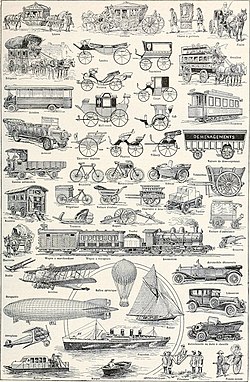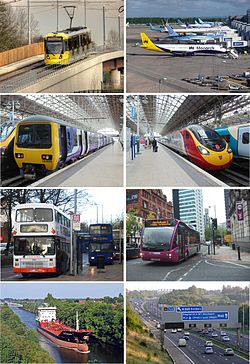| Part of a series on |
| Transport |
|---|
| |
| Modes |
| Overview |
| Topics |
| |
The following outline is provided as an overview of and topical guide to transport:
Contents
- Essence of transport
- Types of transport, by availability
- Types of transport, by mode and vehicles
- Aviation
- Animal-powered transport
- Cable transport
- Conveyor transport
- Convoy
- Human-powered transport
- Hybrid transport
- Military transport
- Ground transportation
- Pipeline transport
- Ship transport
- Space transport
- Transmission
- Transportation systems
- Networks
- Nodes
- Subsystems
- History of transport
- Theory and design
- Fictional and proposed future transport
- Transport by region
- Transport lists
- See also
- External links
Transport or transportation– movement of people and goods from one place to another.

